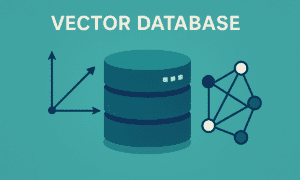Imagine a world where every device, from your thermostat to your car, is interconnected, constantly exchanging data to improve efficiency and convenience. This seamless connectivity enhances automation, enabling smarter decision-making and predictive maintenance. As technology advances, the potential for innovation grows, transforming industries and everyday life.
How does this interconnected web of devices affect IT Infrastructure Management (ITIM)? The rise of IoT is transforming how businesses monitor, secure, and optimize their technology ecosystems. This article explores how IoT is transforming IT infrastructure, highlighting the opportunities and difficulties it presents for modern enterprises.
Adapting to the Complexities of Infrastructure Management
As businesses embrace IoT technologies, the complexities of managing IT infrastructure have changed significantly. The traditional boundaries of networks are expanding beyond recognition, with countless devices requiring connectivity and integration. Managing IT infrastructure is tougher as organizations monitor countless connected devices for smooth, secure operation.
IoT introduces a multitude of endpoints, each potentially vulnerable to security breaches or operational failures. This necessitates robust strategies for monitoring, securing, and maintaining these diverse elements within the infrastructure. Organizations must implement real-time monitoring solutions and automated response mechanisms to detect and mitigate risks before they escalate.
Scalability Demands and Resource Optimization
One of the profound impacts of IoT on ITIM is the demand for scalability. Organizations must now prepare for exponential growth in data volume and device connections. Scalable infrastructure solutions become imperative to handle these increasing demands efficiently. Without a flexible and adaptable infrastructure, businesses risk performance bottlenecks that can slow down operations and reduce efficiency.
Moreover, resource optimization takes center stage as IT departments seek to maximize the utilization of existing infrastructure while accommodating new IoT devices seamlessly. This shift requires agile management frameworks that can adapt to dynamic environments without compromising performance. Companies must invest in cloud-based solutions and automated provisioning tools to balance workload distribution effectively.
Integration of Edge Computing and IoT
With IoT, computing power is no longer confined to centralized data centers. Edge computing emerges as a critical component, enabling real-time data processing and reducing latency. This decentralization redistributes computing resources closer to the data source, enhancing efficiency and responsiveness. Businesses that leverage edge computing can significantly improve their ability to process and analyze data quickly, leading to better decision-making.
As edge devices proliferate, ITIM strategies must incorporate robust edge management capabilities to ensure seamless integration and operation across distributed environments. Organizations need to deploy intelligent networking solutions that can efficiently manage edge devices, ensuring secure data transfers and minimal downtime.
Security and Compliance in a Connected Ecosystem
The interconnected nature of IoT devices introduces unprecedented security issues. Each connected endpoint becomes a potential entry point for cyber threats, demanding enhanced security protocols and proactive monitoring strategies. Without strong security measures, organizations risk data breaches, operational disruptions, and reputational damage.
Furthermore, regulatory compliance becomes more complex as data privacy laws change to encompass IoT-generated data. Organizations must adhere to stringent compliance requirements while safeguarding sensitive information across the entire infrastructure. Companies must also develop comprehensive data encryption and access control mechanisms to protect valuable business and customer information from unauthorized access.
Operational Efficiency and Predictive Maintenance
IoT-enabled sensors and devices provide invaluable insights into operational efficiency and asset performance. By leveraging real-time data analytics, organizations can optimize workflows, predict maintenance needs, and preemptively address potential disruptions. Businesses that use predictive maintenance models can prevent costly downtime and ensure continuous operations.
This proactive approach not only enhances operational efficiency but also prolongs the lifespan of critical infrastructure components, minimizing downtime and reducing maintenance costs. Advanced analytics and artificial intelligence play a crucial role in analyzing patterns and predicting potential failures before they happen.
The integration of IoT into IT Infrastructure Management represents a paradigm shift, introducing both opportunities and difficulties for businesses. Organizations can navigate connected ecosystems by embracing scalability, edge computing, security, and data-driven insights. Companies that invest in intelligent ITIM strategies will be better positioned to handle the future demands of an increasingly interconnected world.



































